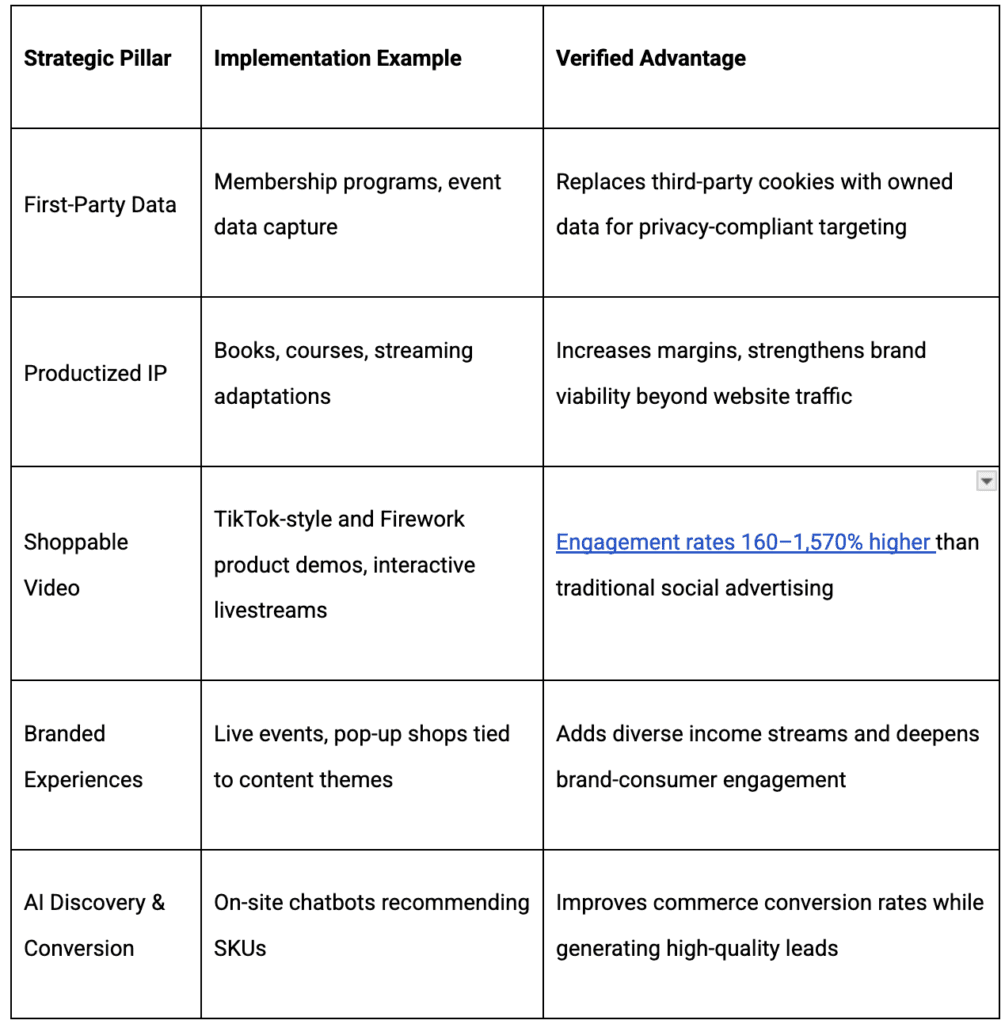
The digital publishing industry is at a decisive crossroads. The era when publishers could rely predominantly on programmatic display advertising as their economic backbone is rapidly ending.
This change is not cyclical, driven by temporary shifts in technology or budgets. it is structural, irreversible and already being felt in the balance sheets of publishers across the world.
The market forces driving this transformation are clear: the collapse of third-party cookies and behavioral targeting, the rise of AI-powered search interfaces that reduce site visits, shrinking CPMs in open-web programmatic markets and the migration of advertising budgets to high-intent, high-measurability channels such as retail and commerce media.
Yet, this is not the end of advertising, nor the end of the publisher’s role in monetization. The data shows a different opportunity: publishers can pivot their strengths—trust, storytelling, audience relationships—into transactional commerce ecosystems. These include shoppable video, affiliate and sponsorship-linked SKUs, publisher-owned products and AI-powered discoverability.
Here’s why programmatic is in structural decline, why commerce media is surging and how publishers can transition from being attention-based monetizers to becoming commerce-driven media brands.
The Structural Decline of Programmatic Display Advertising
Programmatic advertising still dominates global digital display spend. Nearly 90% of display ad transactions in 2025 happen programmatically. But the economics for publishers tell a starkly different story.
By early 2025, the economic picture for publishers had grown stark. Display CPMs fell 33% year-over-year in January, while video CPMs declined even more sharply at 39%. At the same time, the erosion of cookies and the unreliability of behavioral targeting left 45% of publishers bracing for significant revenue losses as inventory value declined and fill rates weakened.
The situation was compounded by collapsing traffic: by May, leading content publishers reported a 25% year-over-year drop in Google search visits, as AI-generated summaries such as Google’s AI Overviews and ChatGPT Search accelerated the “zero-click” environment where users increasingly get answers without ever visiting publisher sites.
The implications are severe: a 25% drop in traffic can trigger a 40–50% drop in programmatic revenue because fixed technology and ops costs don’t shrink in lockstep with revenue declines.
Commerce and Retail Media: The Fastest-Growing Advertising Channel
While programmatic’s growth continues to slow, retail media is surging at a rate of 15–20% year-over-year globally, making it the fastest-growing segment in digital advertising. In the United States alone, retail media spend is projected to reach $165.9 billion by the end of 2025, up dramatically from $50.7 billion in 2019.
Today, it accounts for nearly 18% of all U.S. digital ad budgets, with European markets on a similar trajectory, set to double from €17 billion in 2025 to €31 billion by 2028 (referenced during DMEXCO.
Advertisers are shifting their budgets to this channel because it offers what traditional display cannot: closed-loop attribution that directly ties spend to sales, access to first-party transaction data for precise and privacy-compliant targeting and placements that reach consumers closer to the point of purchase, effectively shortening the sales cycle.
As a result, retail media is siphoning dollars from both display and search, rewarding platforms and publishers who can deliver commerce-linked experiences.
So where does this leave publishers? The opportunity isn’t to fight for scraps of a shrinking programmatic pie, but to adopt a new operating model centered on commerce media.
Why Publishers Must Think Like Merchants
The core opportunity for publishers lies in adopting commerce media and transactional revenue models, diversifying from selling attention about products to actually facilitating and benefiting from product transactions.
The effectiveness of shoppable video and affiliate-driven commerce is already well-documented. TikTok affiliate content, for example, generates a 5.2% engagement rate (160% higher than Instagram) while 78% of TikTok users report making purchases after seeing affiliate recommendation videos.
Even micro-creators with fewer than 50,000 followers are driving outsized results, achieving commerce-linked engagement rates above 30%, which is more than 1,500% higher than Instagram’s averages.
Publishers embedding affiliate SKUs directly into video content experience not only higher commissions but stronger advertiser interest, as programs are directly tied to measurable transactions.
Some publishers are already capitalizing on this shift by weaving commerce directly into their business models. CNET’s partnership with Best Buy, for instance, merges editorial authority with an embedded shoppable layer, making it possible to clearly track the reader-to-purchase journey.
Yahoo’s collaboration with Lowe’s takes a similar approach, blending content, audience insights and commerce into closed-loop campaigns that deliver measurable results. Beyond partnerships, many publishers are launching their own product lines—from cookbooks and kitchenware to educational courses—building higher-margin revenue streams, strengthening brand equity and creating recurring sales without relying solely on third-party ad cycles.
AI Chatbots and Smart Discovery as Revenue Multipliers
One of the biggest challenges with commerce content is discoverability, particularly as traditional referral channels like organic search and social feeds continue to decline.
To address this, publishers are turning to AI as a new pathway forward. Outlets such as The Financial Times, Forbes, Snopes and Trusted Media Brands are already deploying AI-powered on-site chatbots that enable real-time conversational queries, personalized product recommendations, and even direct commerce transactions.
By requiring registration or logins to access these tools, publishers are simultaneously building valuable first-party data assets, which can then be used for precision targeting in future commerce campaigns.
AI moves publishers from passive content delivery to proactive, data-driven customer relationship management, keeping commerce offerings visible even when users bypass traditional site navigation.
The Commerce Media Blueprint for Publishers
The Reality: A Time for Transition, Not Defense
All of the available data points to the same conclusion: programmatic display CPMs are falling, traffic is shrinking and cookie-based targeting is quickly disappearing.
At the same time, retail and commerce media are absorbing the budgets that once fueled programmatic, largely because they can prove ROI and directly close the sale.
- Publishers that embrace this shift—pivoting to transactional, commerce-driven content—are already seeing stronger advertiser alignment, higher user engagement and more repeatable, scalable revenue growth.
From Media Brand to Commerce Engine
The decline of programmatic display is irreversible. But for publishers, this is also a moment of liberation: the chance to design business models that are resilient, growth-oriented and less dependent on volatile traffic-driven ad ecosystems.
The winning strategy is clear:
- Act like a retailer: create, curate, and sell products directly.
- Use video and interactive formats to capture high-intent engagement.
- Build commerce experiences underpinned by first-party data and AI-driven personalization.
- Partner with brands on measurable, transactional campaigns, not just exposure-driven ads.
In this new era, “creativity meets commerce” is not a catchphrase. It’s the fundamental operating model for survival and growth. Publishers who embrace this will control their destiny in the years ahead.
Those who cling to the old programmatic display paradigm will find themselves with shrinking audiences, declining revenue and diminishing relevance.
